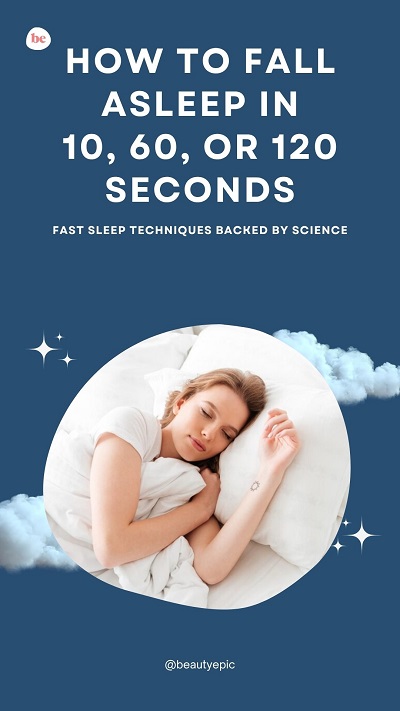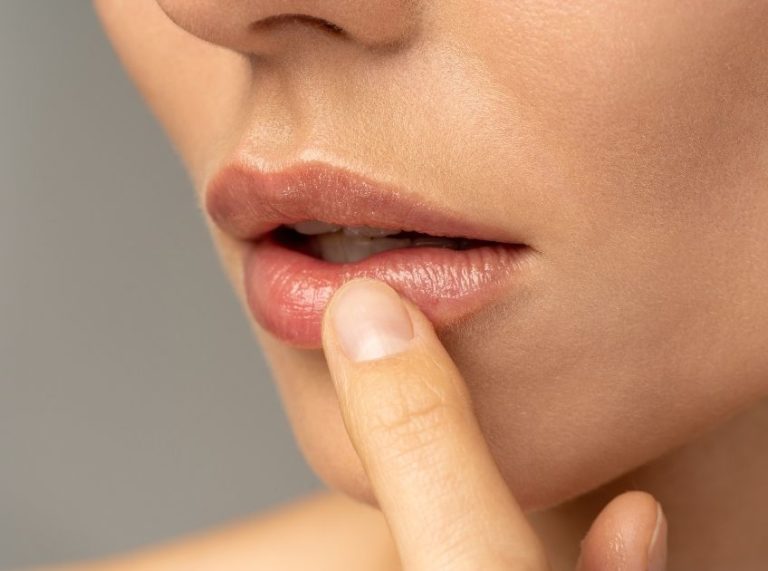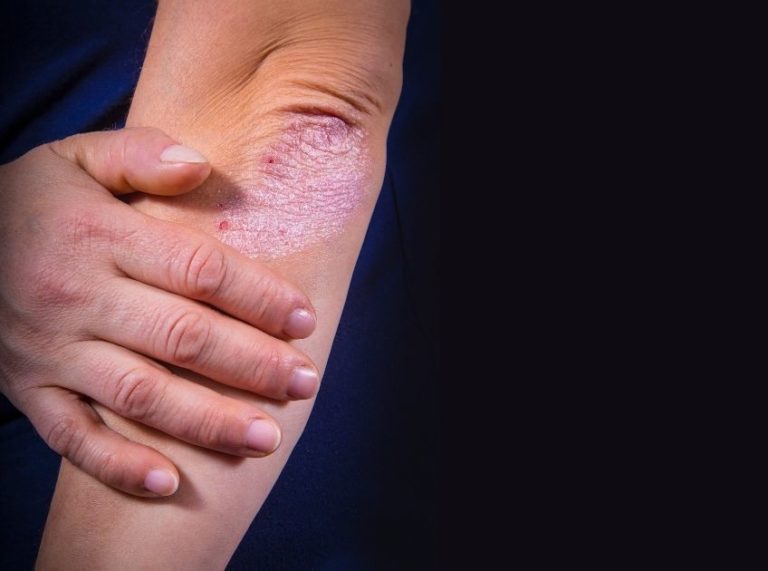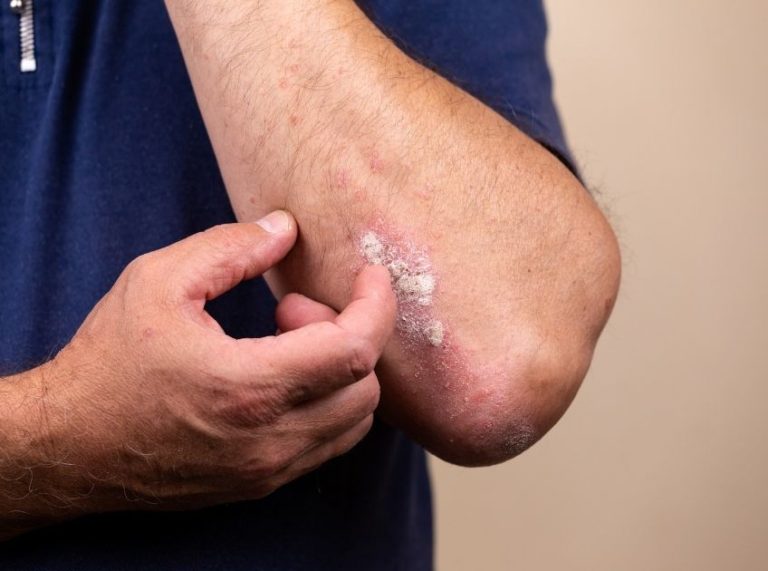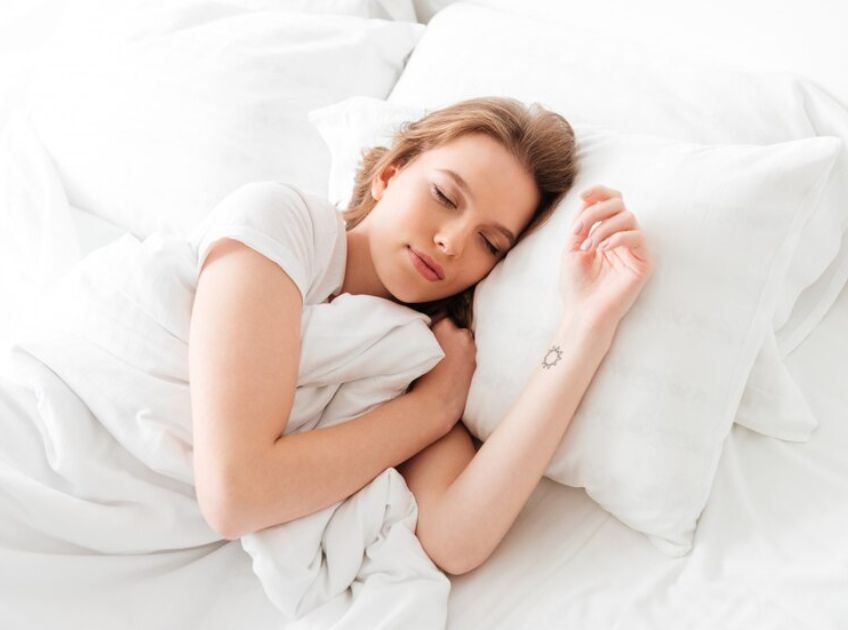
Important: This article is for informational purposes only. Please read our full disclaimer for more details.
Falling asleep quickly can feel impossible when your mind is racing or your body won’t relax. Whether it’s stress, screen time, or poor habits keeping you awake, the good news is—sleep experts and science-backed methods can help you fall asleep in as little as 10, 60, or 120 seconds.
This guide explores proven strategies, including breathing techniques, mental exercises, and acupressure points, so you can drift off faster and wake up feeling more refreshed.
Article Contains
- What Stops You from Falling Asleep Instantly?
- Fall Asleep in 10 Seconds: Military Sleep Method
- Step-by-Step Instructions to Use the 10-Second Sleep Method
- Fall Asleep in 60 Seconds: 4-7-8 Breathing Technique
- Fall Asleep in 120 Seconds: The Body Scan + Visualization
- Acupressure Points to Help You Sleep
What Stops You from Falling Asleep Instantly?
Before diving into methods, it helps to understand the causes behind delayed sleep onset:
- Anxiety or racing thoughts
- Poor sleep hygiene (e.g., screen time before bed)
- High cortisol or stress levels
- Disrupted circadian rhythms
According to the National Sleep Foundation, healthy adults should fall asleep within 10–20 minutes of going to bed. But with the right techniques, you can train your brain to wind down even faster (1).
Fall Asleep in 10 Seconds: Military Sleep Method
This legendary technique used by the U.S. military is designed to help pilots and soldiers fall asleep under stress—within 10 seconds.
Why It Works
The method focuses on deep physical relaxation and mental quieting, which helps override the body’s stress response (sympathetic nervous system) and activate the parasympathetic nervous system—the one responsible for rest and recovery.
Let’s break it down.
Step-by-Step Instructions to Use the 10-Second Sleep Method
Step 1: Relax Your Face Completely
- Start with your forehead—let go of all tension.
- Allow your eyelids to droop naturally.
- Release the muscles around your eyes, mouth, and jaw.
- Let your tongue rest comfortably, not pressing against the roof of your mouth.
This step signals the body that it’s safe to shut down.
Step 2: Drop Your Shoulders and Arms
- Let your shoulders fall as if they’re melting into the bed.
- Feel the weight of your upper arms, elbows, forearms, and hands becoming heavy.
- If needed, gently wiggle your arms and then let them go limp.
This helps eliminate the subtle tension we carry in our upper body—even while lying still.
Step 3: Exhale and Relax Your Chest
- Breathe out slowly and feel your chest collapse gently.
- Don’t control the breath—just observe and soften the chest and ribcage.
Your breathing should become slower and more automatic.
Step 4: Let Go of Legs and Feet
- Start from the thighs, move down to the knees, calves, and finally the feet.
- Imagine your lower limbs becoming warm and heavy, sinking into the bed.
This progressive muscle release slows your heart rate and grounds the body.
Step 5: Clear Your Mind for 10 Seconds
Here’s the trickiest but most crucial part: mental stillness. To avoid intrusive thoughts or stress-inducing inner chatter:
- Imagine you’re floating on a calm lake under a blue sky.
- Or, visualize yourself lying in a dark room on a soft velvet hammock.
- Alternatively, repeat the phrase “don’t think” for 10 seconds to quiet your mental noise.
Avoid analyzing the process—just go with the flow. When practiced regularly, this method trains your brain to recognize these cues as signals to sleep.
Tips to Make It More Effective
- Practice during the day: Don’t wait until bedtime. Try the technique when you’re relaxed so it becomes second nature.
- Create a sleep-friendly environment: Keep the room cool, dark, and quiet. Remove screens and avoid caffeine 6 hours before bed.
- Be consistent: Like any habit, it gets better with repetition. Commit to practicing nightly for 2–6 weeks.
Scientific Basis: This method was popularized in the book Relax and Win: Championship Performance. While anecdotal, it aligns with progressive muscle relaxation and guided imagery—both scientifically supported tools for insomnia (2).
Fall Asleep in 60 Seconds: 4-7-8 Breathing Technique
The 4-7-8 breathing technique, developed by Dr. Andrew Weil, is a simple but powerful method to calm your nervous system. It works by regulating your breathing to promote parasympathetic activity—helping reduce cortisol levels and ease the mind into sleep.
How to Do It
- Inhale quietly through your nose for 4 seconds
- Hold your breath for 7 seconds
- Exhale completely through your mouth for 8 seconds
- Repeat this cycle for 4 rounds
This pattern increases oxygen intake, lowers heart rate, and slows brain activity, which helps quiet racing thoughts.
Why It Works
This method has roots in pranayama (yogic breathing) and is supported by research showing that controlled breathing slows the heart rate and activates the vagus nerve (3). With regular practice, it trains your body to enter a relaxed state more quickly.
Fall Asleep in 120 Seconds: The Body Scan + Visualization
If you have trouble switching off mentally, this method combines progressive relaxation with mental imagery, offering a powerful tool to fall asleep in about 2 minutes.
How to Do It
- Lie down comfortably and close your eyes.
- Begin a body scan—start from your toes and mentally move upward, relaxing each part (toes, legs, hips, chest, arms, face).
- Once fully relaxed, visualize a peaceful scene: floating on a calm lake, lying in a warm meadow, or drifting in space.
- If your mind wanders, gently bring it back to your body or image.
Why It Works
This method is backed by mindfulness-based cognitive therapy (MBCT) and progressive muscle relaxation techniques. Research in Behavior Research and Therapy (2009) shows body scans reduce arousal and improve sleep quality, especially in people with anxiety or insomnia (4).
Acupressure Points to Help You Sleep
Acupressure is a traditional Chinese medicine practice that involves applying pressure to specific points on the body to balance energy flow and promote rest.
1. Yin Tang (Third Eye Point)
- Location: Between the eyebrows.
- How: Gently press for 1 minute in slow circles.
- Benefit: Calms the mind, relieves anxiety.
2. HT7 (Heart 7 / Spirit Gate)
- Location: Inside of the wrist crease, below the pinky finger.
- How: Apply firm, circular pressure for 1–2 minutes.
- Benefit: Eases worry and emotional tension.
3. KD1 (Kidney 1 / Bubbling Spring)
- Location: Sole, about 1/3 down from the toes.
- How: Press gently for 2 minutes before bed.
- Benefit: Grounds energy, promotes relaxation.
4. An Mian (Peaceful Sleep Point)
- Location: Behind the ear, just above the bony ridge.
- How: Use your fingertips to massage in small circles.
- Benefit: Traditionally used for insomnia relief.
Scientific Insight: A 2015 review in Sleep Medicine Reviews noted that acupressure can significantly improve sleep quality in adults with insomnia (5).
Frequently Asked Questions (FAQ’S)
1. What if I try these methods and still can’t fall asleep?
A. If sleep problems persist for more than 3 weeks, it could be chronic insomnia. Consult a sleep specialist or therapist trained in Cognitive Behavioral Therapy for Insomnia (CBT-I), which is considered the gold standard.
2. Can I do these techniques during the day for a nap?
A. Absolutely. These methods are ideal for napping too. Just ensure your nap is under 30 minutes if you want to avoid grogginess or sleep disruption at night.
3. Are there supplements that help fall asleep faster?
A. Melatonin, magnesium, and L-theanine are common. However, always consult a healthcare provider before using sleep supplements, especially if you’re on medication.
Falling asleep in 10, 60, or 120 seconds may sound too good to be true, but with consistent use of the right techniques—like military relaxation, breathing exercises, and acupressure—you can teach your body to shift into sleep mode more quickly. Support your efforts with good sleep hygiene, a calming evening routine, and professional help when needed.
